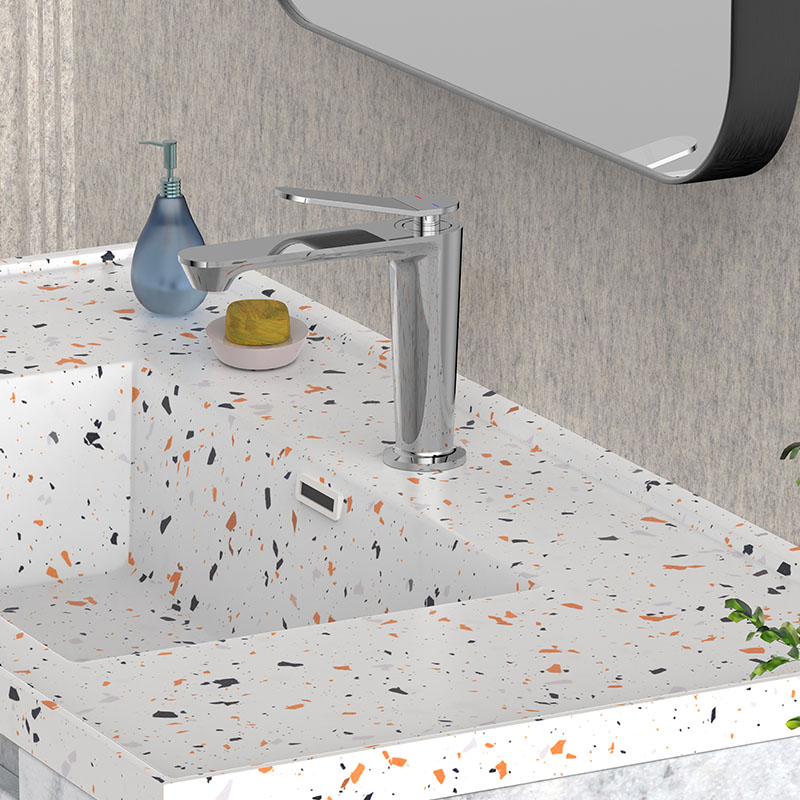Integrated Solutions for Smart Bathroom Systems in Home Scenarios
Driven by the Internet of Things (IoT), artificial intelligence (AI) and 5G technologies, bathroom systems are transforming from single-function devices to "smart health centers" in home scenarios. smart bathroom systems not only improve the quality of life of users through device interconnection, data intercommunication and scene collaboration, but also redefine the comfort and convenience of modern homes with integrated solutions.
1. System architecture: from fragmentation to global collaboration
Terminal layer
Covering smart toilets, thermostatic showers, mirror cabinets, bathroom heaters and other devices, interconnected through Zigbee, Bluetooth Mesh or Wi-Fi 6 protocols.
Edge layer
Deploy edge computing gateways to handle tasks with high real-time requirements and reduce cloud load and network latency.
Cloud layer
The cloud platform integrates user behavior data, device status and external information to provide cross-scenario services.

2. Key technologies: core engine driving experience upgrade
Multimodal interaction technology
Voice control: supports dialect recognition and fuzzy commands, and the accuracy of toilet voice command recognition is 98%;
Gesture sensing: millimeter wave radar recognizes waving movements to control the shower switch to avoid the risk of electric shock with wet hands;
Biometrics: activate personalized mode through fingerprint or facial recognition.
Health monitoring and data analysis
Urine flow rate analysis: smart toilets evaluate prostate health through flow rate sensors, and directly connect to medical institutions after data encryption;
Skin condition detection: mirror cabinets have built-in spectral cameras to analyze user skin quality and recommend skin care solutions. The repurchase rate of a certain product increased by 40% after it went online.
Energy saving and safety technology
Water and electricity linkage algorithm: when the water flow sensor detects a water leak, it automatically closes the main valve and pushes an alarm message, and the stop loss response time is ≤10 seconds;
Energy optimization: air-energy water heaters intelligently select heating time according to the peak and valley periods of household electricity consumption, saving 25% of electricity bills.
3. Application scenarios: from function superposition to scene fusion
Personalized bathing scenes
Mode memory: The system records the bathing preferences of each family member and automatically switches through voiceprint recognition;
Body sensory optimization: The shower head has a built-in micro-turbine, which adjusts the water particle size according to the change in water pressure, and the body sensory comfort is improved by 50%.
Health management center
Sleep assistance: The smart bathtub helps users enter a deep state of relaxation through heart rate monitoring and water temperature adjustment. A clinical experiment showed that the improvement rate of insomnia reached 65%;
Chronic disease warning: The toilet health detection module regularly generates urine routine reports, and the accuracy rate of diabetes risk warning exceeds 85%.
Aging-friendly transformation
Anti-fall system: The ground pressure sensor identifies abnormal movements and links the handrail motor to provide support;
Voice emergency: In an emergency, the user can call the family AI assistant through the built-in microphone of the bathroom heater and automatically contact the emergency center.
4. Challenges and solutions
Compatibility and cost problems
Current situation: Different brands of equipment have different protocols, and the cost of smart transformation of the whole house exceeds 50,000 yuan;
Countermeasures: Promote the Matter universal protocol and jointly launch the "Smart Bathroom Package for Finely Decorated Houses" with real estate companies, reducing the cost per household to 12,000 yuan.
Data security and privacy risks
Current situation: 43% of users refuse to use the health monitoring function due to privacy concerns;
Countermeasures: Use federated learning technology to process health data locally; encrypt user information through blockchain and manage permissions in a hierarchical manner.
User experience education
Current situation: Elderly users have low acceptance of complex functions;
Countermeasures: Design "elder mode", the interface only retains core functions, and the operation steps are ≤3 clicks.
5. Future trends: from intelligence to "wisdom"
AI emotional interaction
Through emotional computing technology, the system can recognize user emotions and automatically adjust the light tone and water flow massage intensity. An experiment showed that user satisfaction increased by 60%.
Carbon neutral scene integration
The smart bathroom system is linked with household photovoltaic and energy storage equipment, and water and electricity data are optimized to the community microgrid, helping to reduce the household carbon footprint by 30%.
Metaverse Pre-Experience
Users preview the bathroom renovation effect through AR glasses, virtually try out different material tiles and faucet combinations, and shorten the decision cycle by 70%.


